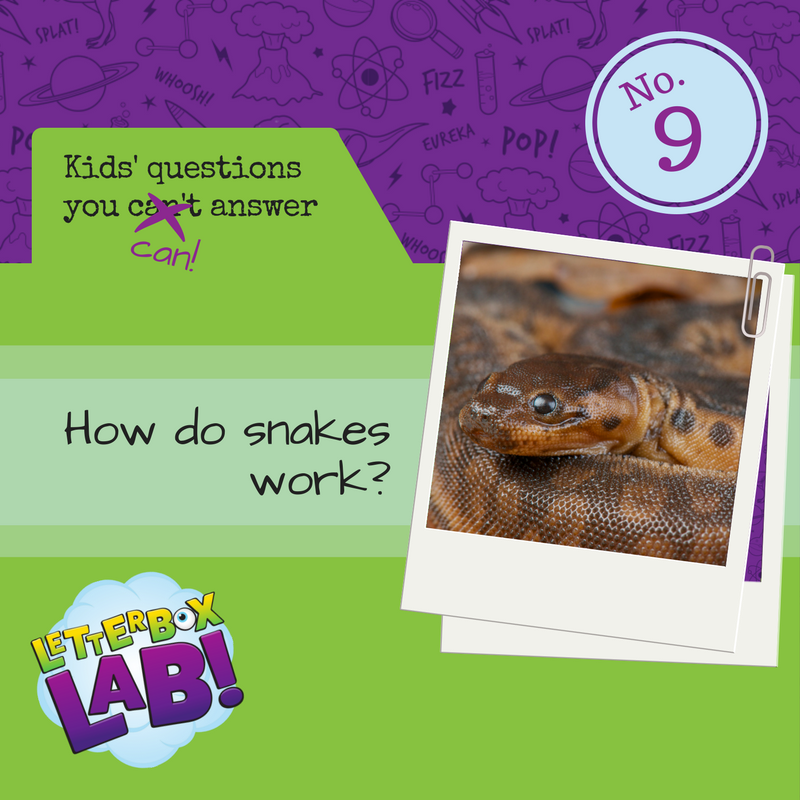Another question that came to us through our blog, and it’s a beauty. I love the thought of a kid looking at a snake and thinking “how does that even work?” It’s a fair question, snakes are weird.
Snakes have many interesting features that allow them to snake about: the way they detect prey, regulate their temperature and even how their bodies manage to fit in a heart, lungs, kidney, liver and all the other organs that you, I and all snakes have. But I’m going to assume that what is most likely to spark the curiosity of a child is the question of how snakes move. If it turns out they were actually interested in how snakes find work in a difficult job market I can only apologise for my assumption.
So, how does a long thin tube manage to move so quickly, even over over smooth surfaces and up trees? Lets think about how we move. We place one part of our body (usually a foot) on the ground and use our muscles to force it down so that friction holds it in. This allows us to extend another body part (the other foot) forwards, then repeat. Friction is very important, as you’ll know if you’ve tried to walk on ice.
Snakes work by exactly the same principle as we do, except that their entire undersurface can act like a foot. They push one little area of belly down to act like an anchor while they lift a loop of their body up off the ground a little and bring it forwards. This loop can then anchor down and bring another loop forwards.
Next time you’re holding a snake (as I happen to be in the photo below), you’ll notice a couple of features that help with their movement. Firstly, they are strong little guys, and those powerful muscles are useful for pushing down on the ground to get grip. Also, look out for the long thin belly scales – these are well adapted to provide lots of friction with the ground. They also give more friction in one direction than the other (which is why snakes are better at going forwards than reversing) and they can be individually angled to get the best grip on the surface. On top of this, they are sensitive enough that they can feel for the variations in the ground beneath that give them the most friction, and any little raised areas that they can push against.

Snakes can even move across completely flat and loose surfaces. To do this they use a slight variation of the above movement called sidewinding, so called because when a snake is using it it moves at almost 90° to the direction its head is pointing. These 90° movements allow snakes to get a grip on surfaces even as loose as sand – and they manage it at astonishing speeds!
But we don’t like to just answer questions here at Letterbox Lab, we like to encourage people to investigate the question for themselves. You could consider getting a snake as a pet and seeing how it moves around for yourself. A small, non-venomous snake is a safe and fascinating pet that can be a companion to your child for many years; your local exotic pet shop would be very happy to talk to you about what type is appropriate. Or your child could investigate snake movement by trying it themselves. Tell them to lie on their belly with their arms by their side and legs straight and see if they can use the principles described above to move forwards. I only managed a few centimetres.
Would you like to spend time with your children doing something that’s fun and educational for them and hassle-free for you?
Letterbox Lab is a monthly science kit that arrives through your letterbox containing everything you need to perform incredible experiments with your children.
Your children will love it. It’s colour changing, fizzing reactons, slimes, things that glow in the dark, making helicopters and catapults. All with beautifully illustrated comic-style instructions that they will actually enjoy reading.
You’ll love it because it’s so easy. It just arrives at your house with everything you need to do all the experiments. Unlike other science kits there’s no looking in the back of cupboard for cream of tartar or figuring out where you can buy propanol on a Sunday afternoon. You just open the box and get started with ease.
Find out more about our unique series of science kits here
Is there a curious budding scientist in your family? Subscribe to our mailing list to get the answers to their burning questions straight to your inbox!
Letterbox Lab is a monthly science subscription box for kids aged 6+. We provide exciting science kits through your letterbox so families can have fun playing with science. Follow us on Twitter, Facebook and Pinterest. Sign up to our mailing list for updates, discounts and free science activities.




Add Comment